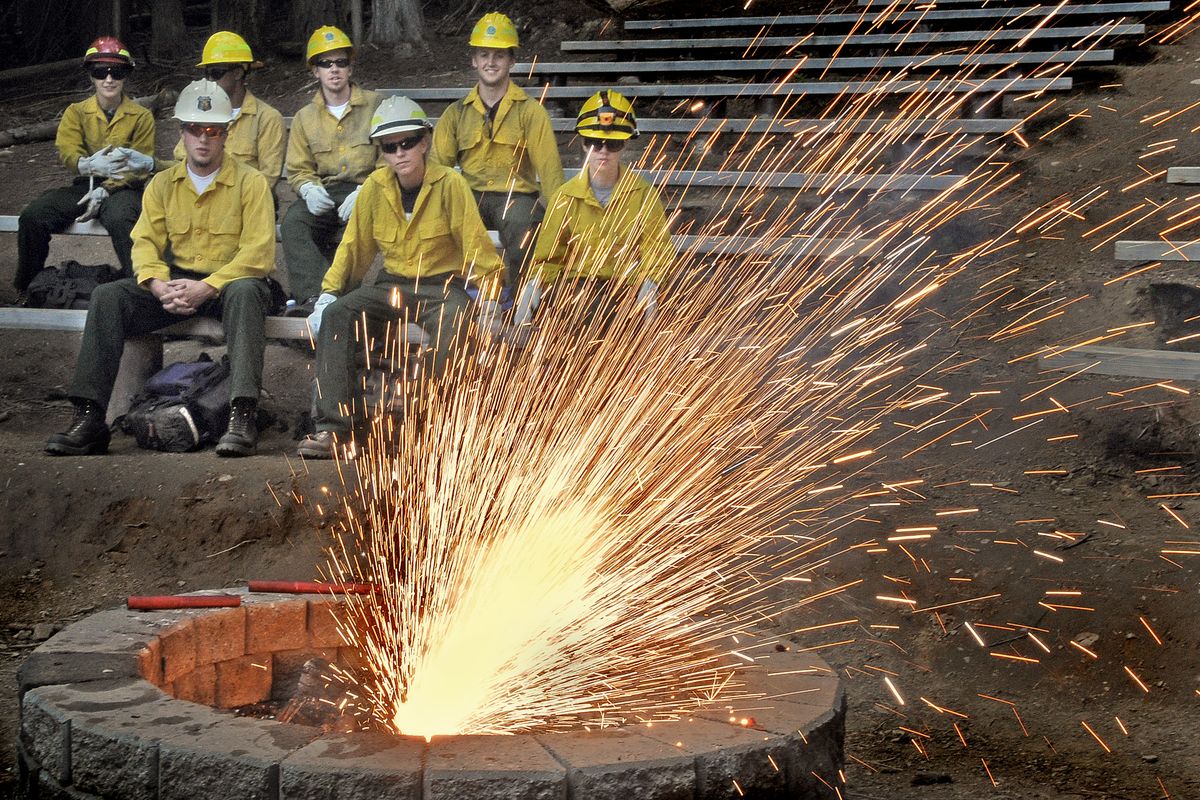Hot summer job
Rookie wildland firefighters train for intense season

CHEWELAH, Wash. – Kelsey Larsen had barely shed her cap and gown after graduating from Colville High School two weeks ago before exchanging them for green Nomex pants, a yellow fireproof shirt, and a hard hat.
Larsen, 18, will get used to her new garb over the next three months as a wildland firefighter. She is one of 50 new firefighters hired by state and federal agencies to battle blazes in forests and public lands this summer in Washington. She and the other rookies spent this week training at the Chewelah Peak Learning Center in the Colville National Forest.
Most of the new firefighters are college students interested in fire science or forestry. It’s rigorous, treacherous work, and pay for a seasonal firefighter is decent: $6,000 to $10,000 for three months of work.
“It helps with college,” said Jaime Walker, 21, who came from Syracuse, N.Y. After training, Walker will work for the fisheries arm of the U.S. Forest Service along the Columbia River this summer while also fighting fires.
The “guard school” is provided once a year for new firefighters from all over the United States. The hires come from several agencies, including the Forest Service, the state Department of Natural Resources, the U.S. Bureau of Land Management, the U.S. Fish and Wildlife Service and the Kalispel Tribe of Indians.
“We like to get everybody together before fire season kicks into high gear,” Forest Service spokesman Franklin Pemberton said.
If early indications are correct, the rookie firefighters will have ample opportunity to hone their skills this summer. The DNR, the state fire marshal and regional fire officials in Boise all predict a busier-than-normal fire season this year.
The recruits spend time in the classroom, followed by hands-on activities in the surrounding forests. They learn basic fire behavior and how to use and maintain their equipment, right down to how to care for their boots.
“But the most important thing is they’ve been pounding safety into our heads,” said Dayton Allemand, 20, of Newport, Wash.
Friday the rookies participated in their final exercise – a prescribed burn near Horseshoe Lake, in which they learned to “size up the fire, suppress it, then mop it up,” Pemberton said.
“We start off Monday with people that have no idea what fighting a fire looks like,” Pemberton said. At the end of the week, they will be “carded” and ready to join fire crews all over the state, he said. They also can be called to fight large fires elsewhere in the country.
“It’s a great opportunity,” said Nolan Flemming, 21, who came from Hilo, Hawaii, to fight fires with the Department of Fish and Wildlife in Pasco. “I want to get the experience under my belt.”
New firefighters also must pass a “pack test” of their physical fitness, strapping on a 45-pound vest and walking three miles in 45 minutes. Running is not allowed.
Larsen said she trained by strapping a 50-pound salt bag on her back and walking up and down her family’s dirt driveway. “If I hadn’t practiced, I would have been in big trouble,” she said.
While most student firefighters will head home in August or September, many full-time wildland firefighters may still be on the job into October.
Nationally, fire seasons are starting earlier and lasting longer. The National Interagency Fire Center in Boise predicts an above-normal fire season for parts of Washington, especially in the Okanogan highlands in the Colville and Wenatchee national forests. Snowpack in that area was 53 percent of normal this winter, officials said.
The state fire marshal this week also announced above-normal fire activity in Eastern Washington.
Typically, fuels don’t dry out until July and August. According to the DNR, fuel moisture on the East Side already dipped below 12 percent Anything below 12 percent is when major fires are likely to ignite.
“I’m a little nervous for my first big fire,” Larsen said. “But I’m just glad to have a job this summer.”